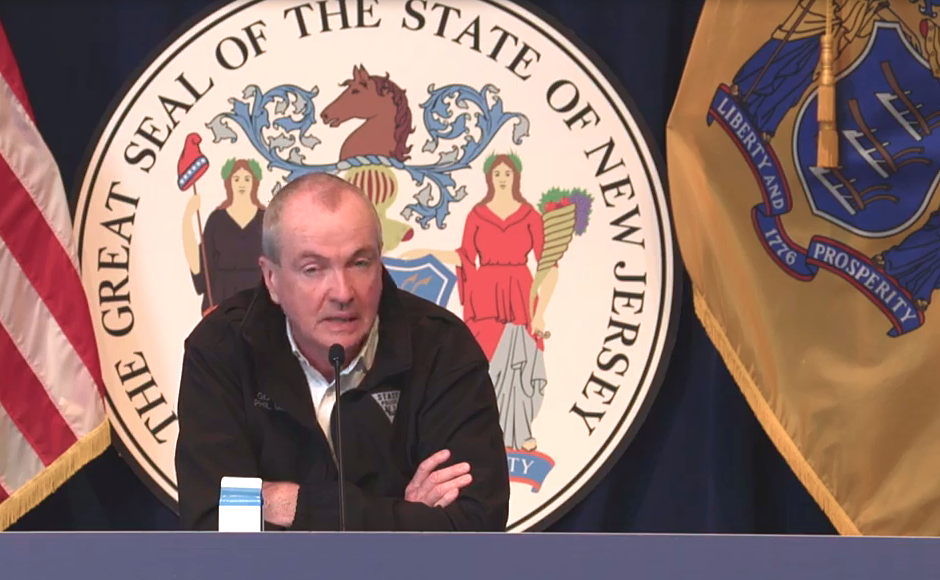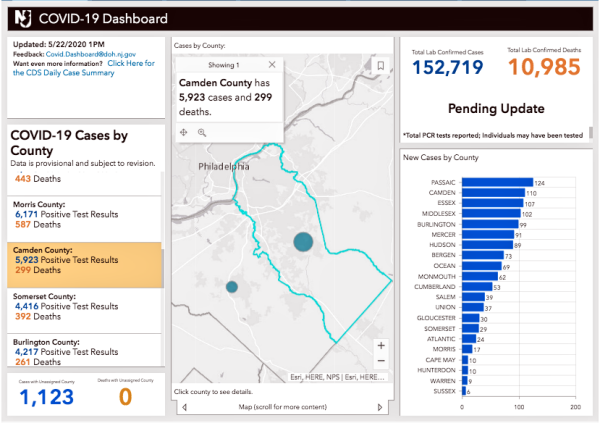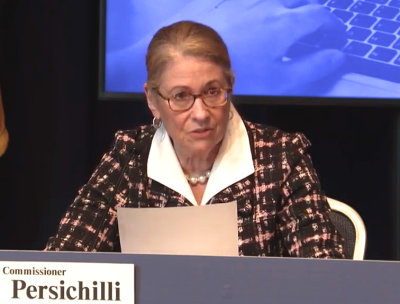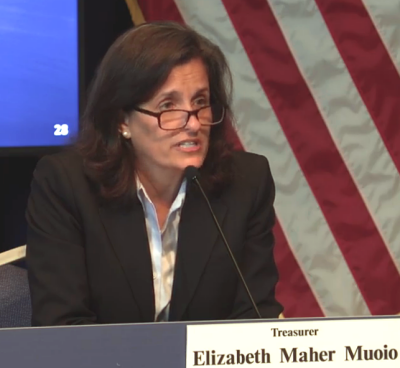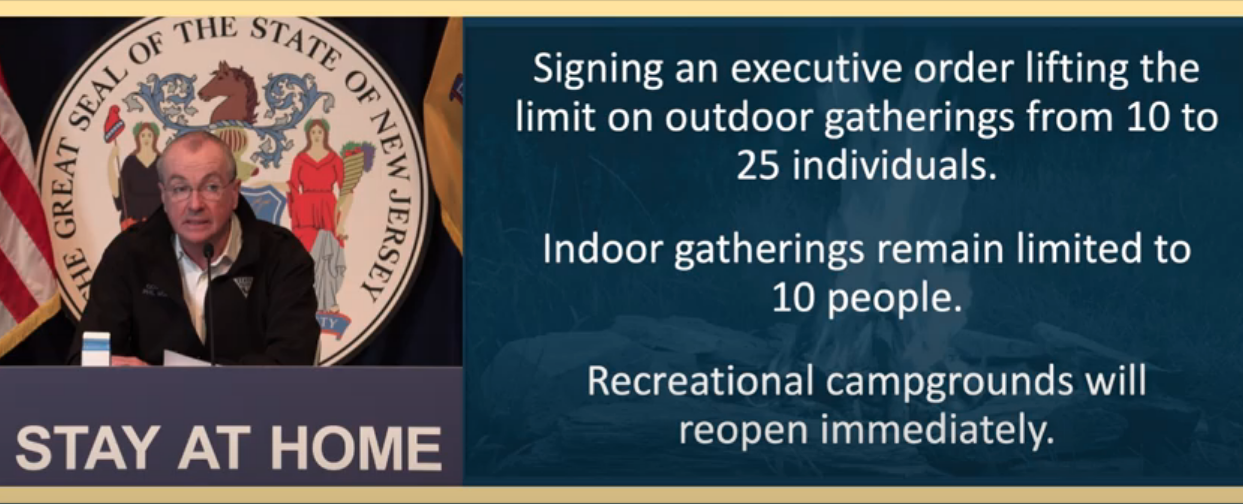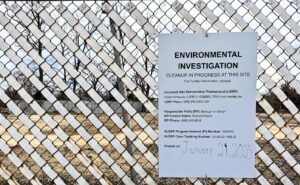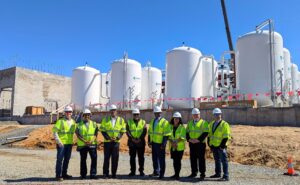Governor Phil Murphy also raised limits on outdoor gathering to 25 people and reopened campgrounds for the Memorial Day weekend.
By Matt Skoufalos | May 22, 2020
Another 1,394 New Jersey residents have tested positive for novel coronavirus (COVID-19), bringing the statewide total to 152,719 cases, Governor Phil Murphy reported Friday.
Sadly, 146 more residents have perished from complications related to the virus, bringing the statewide death toll to 10,985 lives lost during the pandemic.
Throughout New Jersey, 3,049 people are currently hospitalized with a case of COVID-19, or while awaiting confirmation of their symptoms.
Of those 3,049 patients, 846 are in intensive or critical care; 674 of ICU and critical-care patients (80 percent) are on ventilators. Both numbers are now at less than 1,000 for three consecutive days, levels that hadn’t been seen since early April.
“Progress has been constant,” Murphy said. “Each day brings with it more signs that we are closer to being able to enter Phase Two of our restart.
“Every key indicator is down from the peak, and the bad days are just as often followed by an equal, if not better, good day,” the governor said.
In the past 24 hours, 71 New Jersey hospitals admitted 151 new COVID-19 patients and discharged 259 others, either to a lower-acuity care setting or to their homes.
Across New Jersey, 530 long-term care (LTC) centers have reported at least one case of COVID-19, and account for 29,262 infected people statewide—patients and staff—or 19 percent of total cases.
That includes 19,847 residents and 9,029 staffers sickened by the virus, and 4,665 lab-confirmed resident deaths (42 percent of the statewide total).
Of 658 veterans residing in a state-run home, 381 residents have tested positive for the virus, and 143 have died from complications related to the virus.
Six veterans home residents are hospitalized with COVID-19 and 95 have recovered from the virus.
At state-run psychiatric facilities, 210 of 1,240 patients and 471 staff members have tested positive for COVID-19.
Seven staffers and 13 patients have died from complications related to the virus.
Forty-three patients are presently receiving care at one of the state’s field medical stations, which have served 461 people in total.
Three more New Jersey children have been diagnosed with multisystem pediatric inflammatory syndrome, also described as Kawasaki Syndrome, for a total of 19. Aged 1 to 18, 14 of the 19 have tested positive for COVID-19; six remain hospitalized, said New Jersey Health Commissioner Judy Persichilli.
COVID-19 cases are doubling at least every 30 days throughout all of New Jersey save Cumberland County, which stands at a 21-day rate, and Hunterdon County, where cases are doubling every 24 days.
The statewide average of COVID-19 spot positivity testing has held at 18 percent since May 16, but it stands higher in South Jersey, at 24 percent as of May 18. Per capita regional hospitalizations continue to trend along comparable levels across North, Central, and South Jersey.
New Jersey ‘approaching a fiscal cliff’
With a projected $10 billion revenue shortfall through June 30, 2021, New Jersey is “approaching a fiscal cliff,” Murphy said, continuing his near-daily appeal for federal aid to help the state avoid deep service cuts.
“That [figure] does not include a tremendous amount of [COVID-19-related] expenditure, and that’s only through June 30 of next year,” the governor said.
State Treasurer Elizabeth Maher Muoio joined the briefing to explain why “a decline of this magnitude would be worse than the Great Recession.”
New Jersey is poised to absorb a 33-percent decline in sales taxes from May through July 2020 over 2019. The worst such decline observed during the Great Recession was 18.4 percent in 2008-2009, Maher Muoio said.
Sales tax for fiscal 2020 is predicted to decline $1.131 billion, down 10.9 percent from projections issued in February, she said. For fiscal 2021, revenues are now anticipated to be $1.528 billion lower, down 14.2 percent from February projections.
“Our road ahead is going to require serious budget-tightening, critically needed borrowing, and much more robust federal assistance,” Maher Muoio said.
Five-hundred-million dollars in planned spending originally introduced in the 2020 state budget has been placed on hold, and $1.32 billion in spending appropriations could be reversed as well, the treasurer said. New Jersey had already frozen nearly a billion dollars in discretionary spending at the beginning of the pandemic.
Murphy’s counsel Matt Platkin said that the state is “actively in conversations” about voluntary furloughs of public sector workers for as many as 90 days, and that “all options are on the table.”
“Some extremely difficult decisions will have to be made in the weeks and months ahead,” Maher Muoio said; “decisions no one wants to make, but they will be unavoidable.”
A fall 2020 COVID-19 resurgence could hit revenue projections by another $1 billion, she said, noting, “It’s very difficult to budget based on supposing there’s a resurgence… we really just have no precedent for this.”
Murphy is regularly in contact with credit agencies about the state’s rating for borrowing purposes, Maher Muoio said. The governor has long said that New Jersey could well need leverage from the U.S. Treasury to borrow enough money to keep itself afloat during the pandemic.
(Maher Muoio’s full presentation on the COVID-19 impacts on the state budget is here.)
Outdoor gathering limits raised to 25, camping allowed
Finally, in an executive order issued today, Murphy raised the capacity of outdoor gatherings from 10 to 25 people, provided social distancing measures remain in place.
Indoor gatherings remain limited to 10 people, and face coverings are recommended.
Under terms of the order, campgrounds are allowed to open immediately as well.
The governor declined to offer guidance on al fresco dining and graduation ceremonies, but promised word would be forthcoming on both after the Memorial Day holiday.
“As we enter this weekend, yes, please enjoy it, but don’t get complacent,” Murphy said. “Let’s prove that we can keep these trend lines moving in the right direction.”

